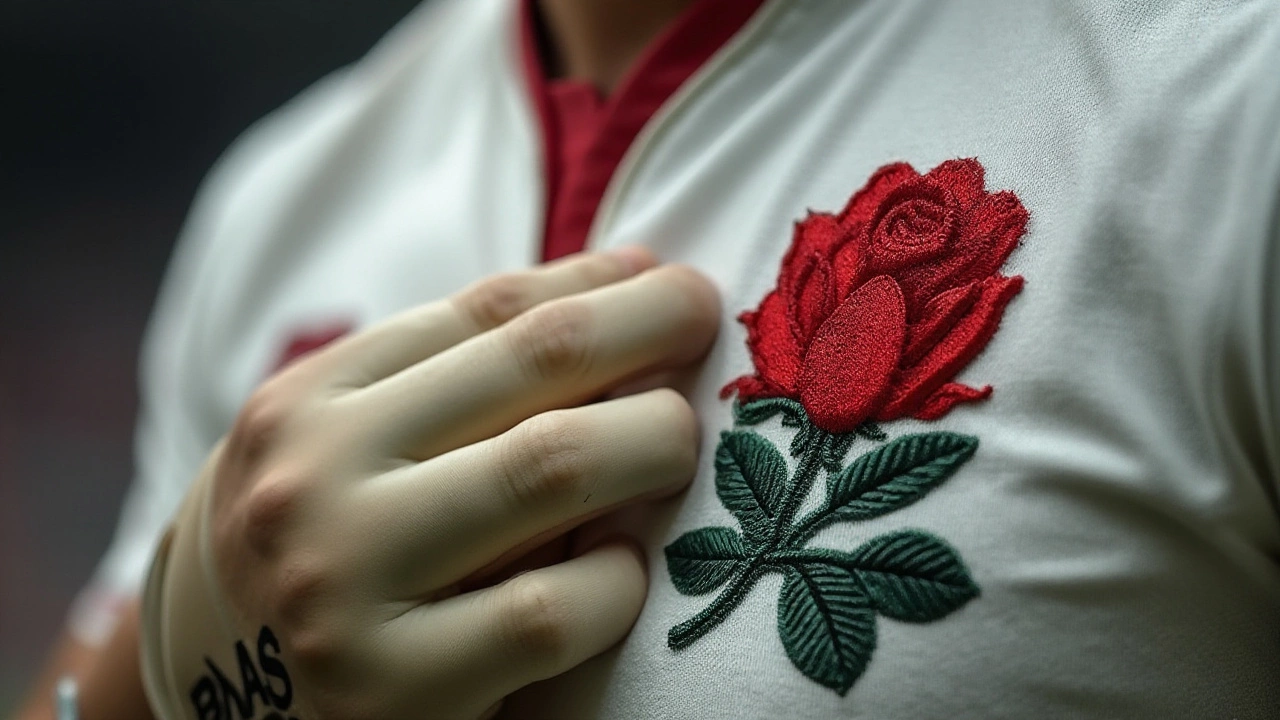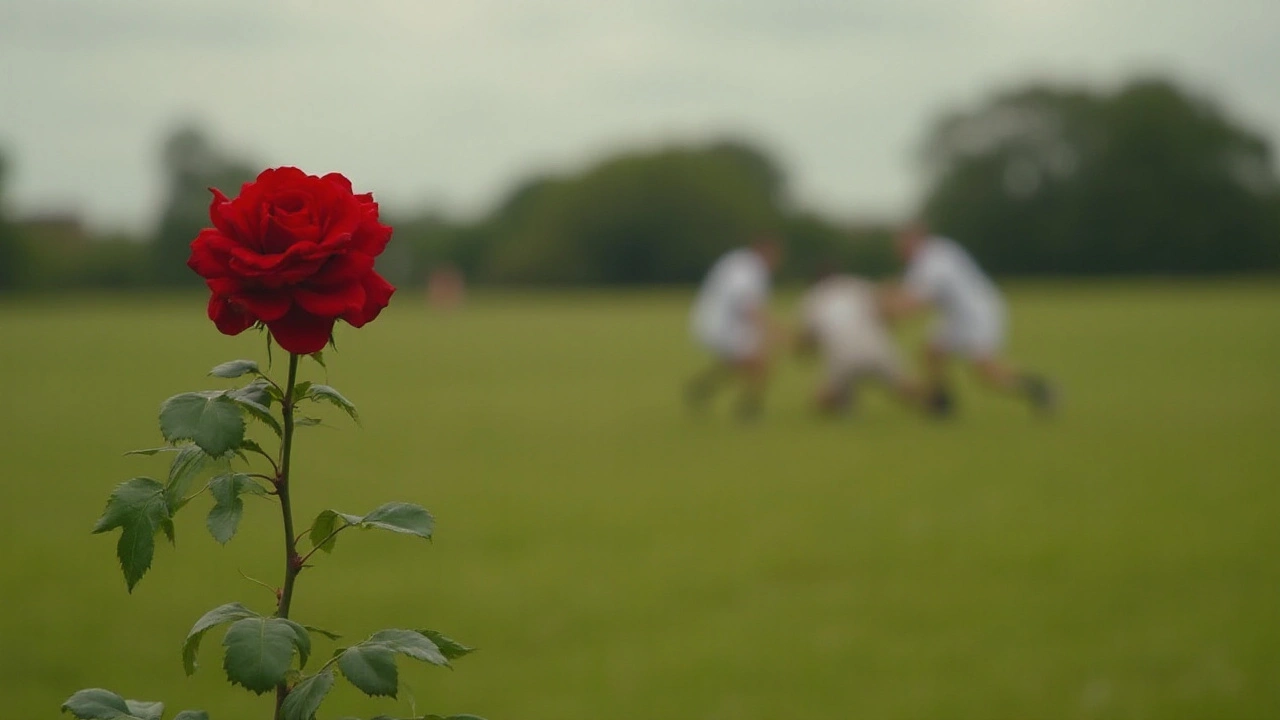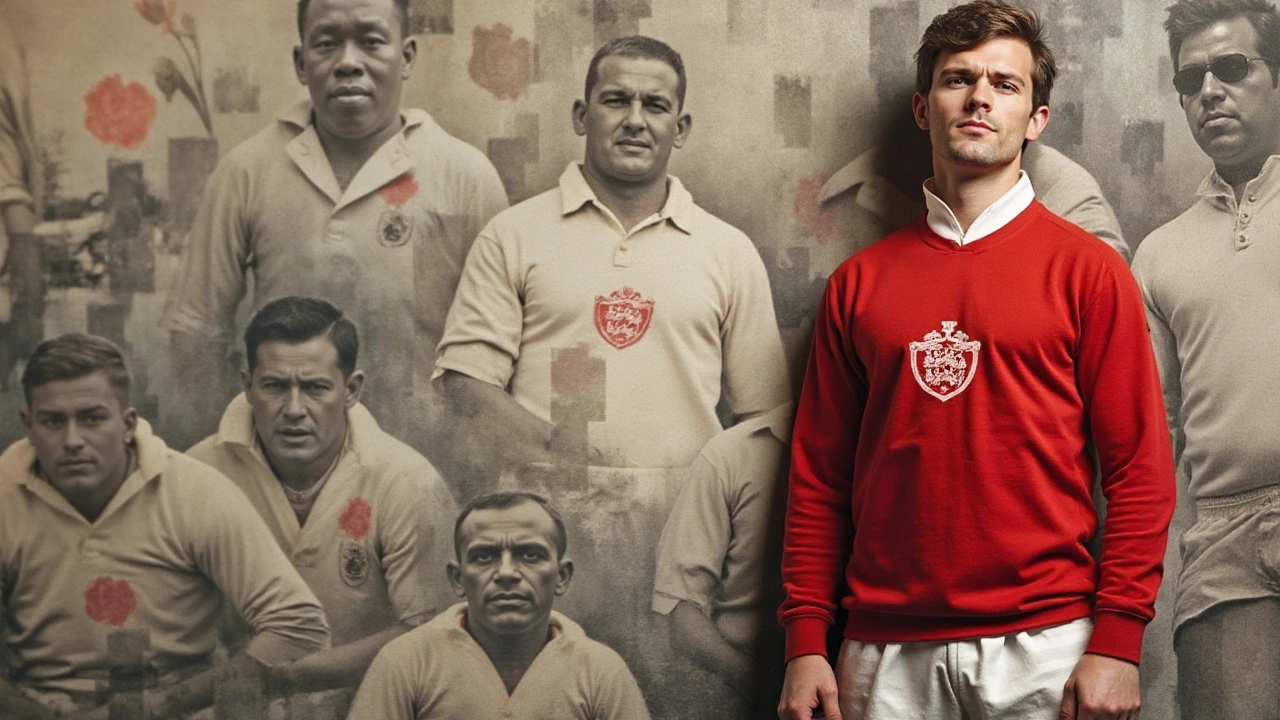Exploring England's Rugby Nickname: 'The Red Rose'
 Jan, 24 2025
Jan, 24 2025
England's rugby team is known worldwide not just for their prowess on the pitch, but also for a nickname that resonates with history and pride—'The Red Rose'. This moniker is more than just a name; it's a symbol that encompasses the rich heritage of the team and its enduring legacy in the sport of rugby. The red rose first made its appearance on team kits during the early years, and over time, it has become a powerful emblem that represents the team's strategy, determination, and spirit. Whether you're an enthusiast of the sport or a curious observer, exploring the significance of 'The Red Rose' offers an insightful glance into what it means to be part of England's rugby story. Join us as we delve into the origins, meanings, and present-day relevance of this iconic nickname.
- Origin of The Red Rose Nickname
- Symbolic Significance in Rugby
- Historical Impact on Team Identity
- Embracing the Red Rose in Modern Games
Origin of The Red Rose Nickname
The nickname 'The Red Rose' for England's national rugby team traces its origins back to a rich tapestry of history and heritage intertwined with England's identity. The use of the red rose as a symbol dates to the era of the War of the Roses in the 15th century, a series of civil wars fought over control of the English throne. The emblem was formally adopted by the English Rugby Football Union (RFU) when the team was first assembled in 1871. This selection wasn't random; it was a deliberate decision to represent England's longstanding historical symbolism—the red rose of the House of Lancaster.
From its inception, the red rose motif has signified more than just an emblem on a jersey; it encapsulates centuries of cultural significance. Sir Edwin Hardy Amies, an English fashion designer and royal dressmaker, famously remarked on this connection.
The red rose is not just a part of England's rugby signifier; it is a brilliant encapsulation of our history and resilience, a flower colored by the blood of our past.This blend of history and modern success gives the team a unique aura that many English fans proudly rally behind.
Throughout different periods, the red rose has stood as a representation of England’s identity in various cultural and sporting arenas. Significantly, when England hosted the 1991 and 1999 Rugby World Cups, the red rose was prominently used in the branding and promotional materials. This symbolism reinforced national pride, tying present-day achievements to England's storied past. Its continued presence on the rugby field is a testament not only to tradition but to an enduring spirit that resonates with every English rugby supporter.
Apart from its cultural and historical significance, the red rose remains an iconic identifier in the world of rugby fixtures. It distinguishes the English team, setting it apart in international competitions. In many ways, the nickname is like the beating heart of English rugby, invoking passion and invoking the respect of friends and foes alike. While some sports teams change mascots and symbols over time, the English team has steadfastly clung to the red rose, preserving its heritage in such a noble sport.

Symbolic Significance in Rugby
The nickname 'The Red Rose' holds profound symbolic significance in the world of rugby, particularly for England rugby. This emblem harks back to the Wars of the Roses, a series of civil wars for control of the throne of England. The red rose was the symbol of the House of Lancaster, representing victory and resilience. This historical association lends an air of gravity and determination to the English team. Each player wearing the red rose on their jersey is reminded of this rich legacy, both on and off the field. The red rose symbolizes not only a connection to the past but also embodies the qualities of strength and unity that are indispensable to the game of rugby.
The role of the red rose extends beyond mere aesthetics. It acts as a rallying point for both players and fans alike, uniting individuals from various backgrounds under a common identity. The sense of belonging this emblem fosters is palpable during international fixtures, where supporters donning red roses flood the stands. This communal spirit can elevate the team’s performance, with players often citing the emotional lift they receive from their supporters. As Martin Johnson, one of England's greatest rugby captains, once remarked, "The red rose is more than just a symbol; it’s the very essence of what it means to belong to something greater."
"The red rose is more than just a symbol; it’s the very essence of what it means to belong to something greater." - Martin Johnson
Moreover, the red rose symbolizes a form of silent communication on the field, echoing resilience and fostering a sense of invulnerability among team members. This shared understanding and the weight of expectations propel players to dig deeper, to persevere against odds. The red rose, therefore, is not merely stitched on the jersey but is woven into the psyche of the English rugby ethos. As they face fierce competition, the emblem is a constant reminder of the tenacity and honor that defines English rugby. It's a mantle they carry into every game, upholding a legacy that extends beyond scores and winning ratios, encapsulating a sportsperson-like spirit and cultural pride. This enduring symbol underscores the identity and heritage shared by those who've had the privilege to represent England on the rugby field.

Historical Impact on Team Identity
Historically, the Red Rose emblem has profoundly influenced the identity of England's rugby team, intertwining the sport with national heritage and pride. The rose was first adopted as a symbol because it is an ancient badge of England, famously associated with the Wars of the Roses—a series of dynastic civil wars for control of the throne of England. Since its inception on rugby jerseys, the rose has carried the weight of English culture into matches played around the globe, becoming synonymous with not only the team itself but what it represents to its fans. For many, seeing the rose invokes a sense of tradition and belonging, creating an identity that players and supporters take to heart, both in victory and in defeat.
The symbolic power of the Red Rose is remarkable and has become an integral part of the emotional fabric of the games. Over the years, countless players have worn the rose with a sense of privilege and responsibility, conscious of the legacy they are participating in. When England fields its team, each player is very aware of the illustrious history thumping in their heartbeats, from memorable victories in notorious battles against Wales or Scotland to standing tough against fierce southern hemisphere competitors like South Africa and New Zealand. It is often said by commentators and former players that to play for England under the rose is both a personal and national honor—a sentiment that continues to thrive in current squads.
The emotional connection between the Red Rose and its supporters is indisputable. Fans typically wear the red rose as a badge of pride, knitting their own identity with that of the team. Supporters often discuss their memories of witnessing great moments in rugby history while clutching memorabilia decked with red roses, whether it's jerseys, flags, or even tattoos. This connection was memorably highlighted during the 2003 Rugby World Cup when England claimed victory. At that moment, the rose was not just an emblem; it was a beacon of national pride—proof of their perseverance and skill on the world stage. Celebrations erupted as the nation basked in its triumph, and the rose was the centerpiece of that jubilation.
According to renowned rugby historian Tom McNally, who remarked in a 2019 interview,
"The Rose encapsulates the essence of what it means to play for England—a commitment to excellence driven by a legacy that spans over a century. Every time a player takes to the field adorned with the rose, they wear not just a shirt but the spirit of all the players who have come before."This sentiment captures why the Red Rose holds such a significant place in rugby folklore—it is a connecting thread through generations that binds together past, present, and future.
The significance of this emblem goes beyond simple symbolism; it plays a strategic role in the mental aspect of rugby. When opponents face England's rugby team, they aren't just confronting a group of talented athletes, but rather, a squad buoyed by a legacy of warriors representing a proud, storied history. The psyching out involved in facing a team with such daunting history and identity as embodied by the Red Rose cannot be underestimated in the realm of international rugby competitions.

Embracing the Red Rose in Modern Games
The iconic Red Rose of England's rugby team isn't just a decorative emblem; it plays a pivotal role in uniting players and fans alike under a common identity. In today's rugby fixtures, wearing the jersey emblazoned with the red rose is akin to donning a piece of history—a tradition that brings with it a deep sense of pride and responsibility. Players are acutely aware of what it means to represent the Red Rose on such an expansive stage, often drawing strength from its symbolism during intense matches. This shared identity becomes a rallying point, transcending beyond the players on the field to resonate with the legions of supporters who pack stadiums worldwide.
Part of this modern embrace is seen in how team strategies and match preparations are interwoven with the cultural ethos the Red Rose represents. Teams frequently carry out rituals steeped in historical significance, all aimed at fortifying the mindset that they represent something larger than themselves. It’s not uncommon for coaches to remind players of the legacy they uphold, ensuring that every scrum and tackle serves as homage to the past while setting the stage for future achievements. The modern player, in many ways, is tasked not only with executing game plans but also with channeling the spirit embedded in the Red Rose.
The influence of the nickname extends beyond the pitch, reaching into the realms of marketing and fan culture. Official merchandise adorned with the Red Rose flies off the shelves, as fans clamor to exhibit their allegiance. The logo is often utilized in promo campaigns, solidifying the identity of the England rugby team across various platforms. This branding has created a community bound by shared allegiances, adding layers to the collective understanding of what the Red Rose signifies in modern contexts. In many ways, its widespread visual presence enhances the solidarity among fans, providing a banner under which they can assemble in unwavering support.
Technology and social media have further propelled the Red Rose into modern conversations. The team’s presence on platforms like Twitter and Instagram sees frequent use of the rose icon, encouraging interaction and engagement among a global audience. Digital campaigns often highlight the history and fervor associated with the rose, inviting fans to interact with their sporting heroes. This digital integration ensures the Red Rose continues to thrive in the awareness of younger generations, intertwining past narratives with the storytelling potential of modern media. As the rugby world moves forward, the Red Rose remains a constant reminder and emblem of English heritage.
Such is the power and draw of the Red Rose, that legends of the sport frequently comment on its enduring significance. As stated by former captain Martin Johnson,
“Wearing the Red Rose on your chest is a reminder of the prowess and legacy of all those who wore it before you. It's more than a jersey; it’s a badge of honor.”